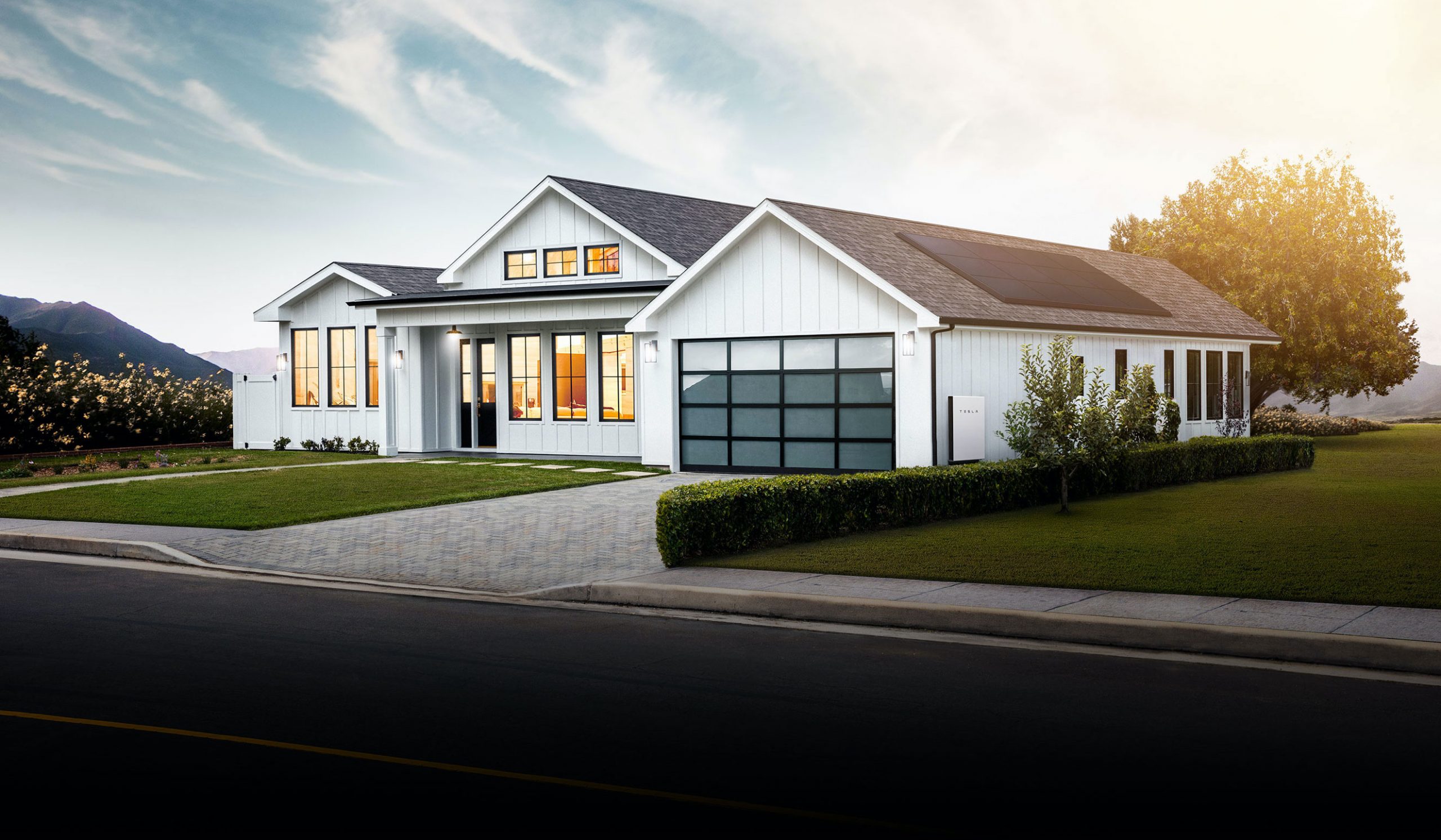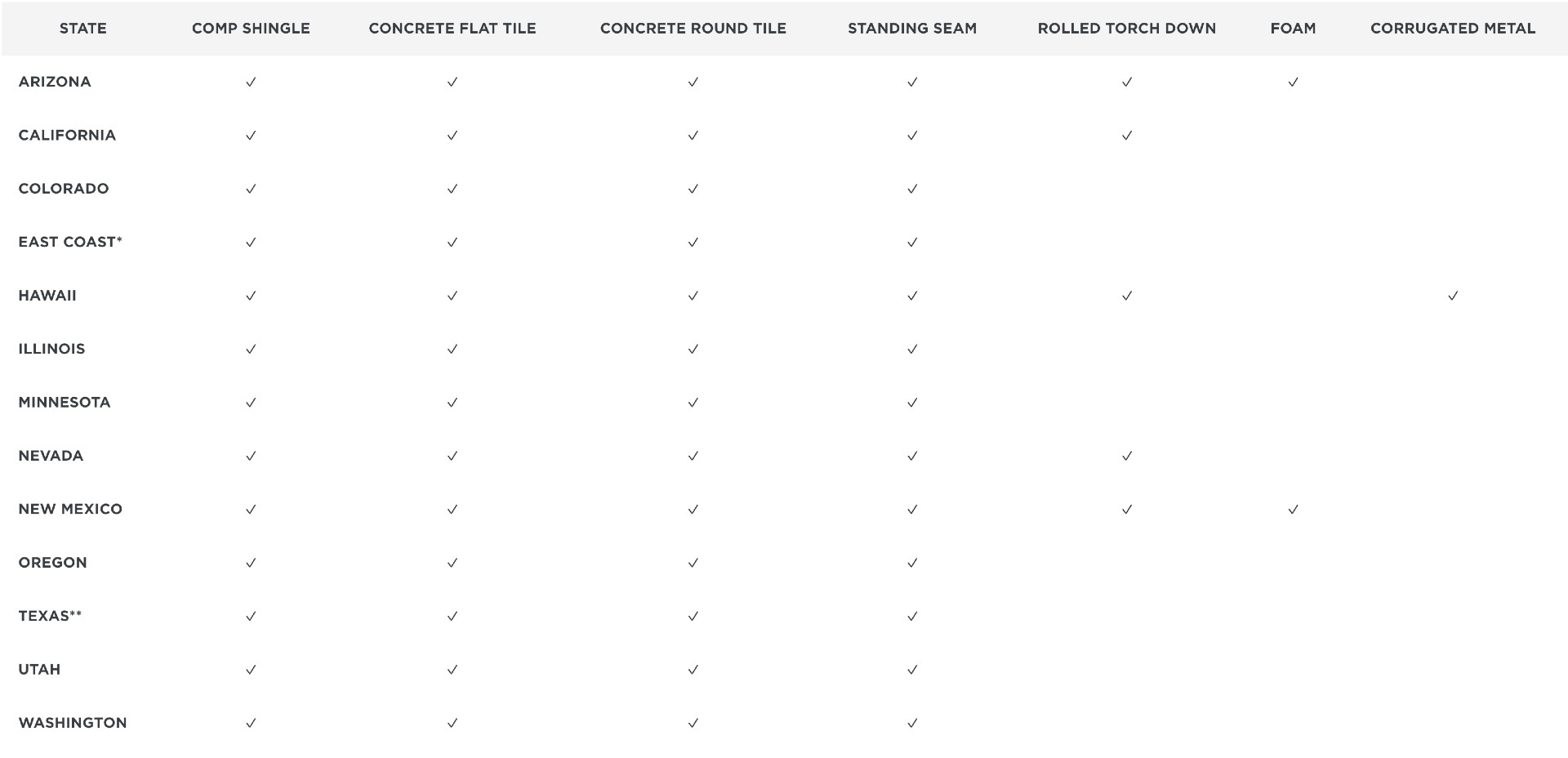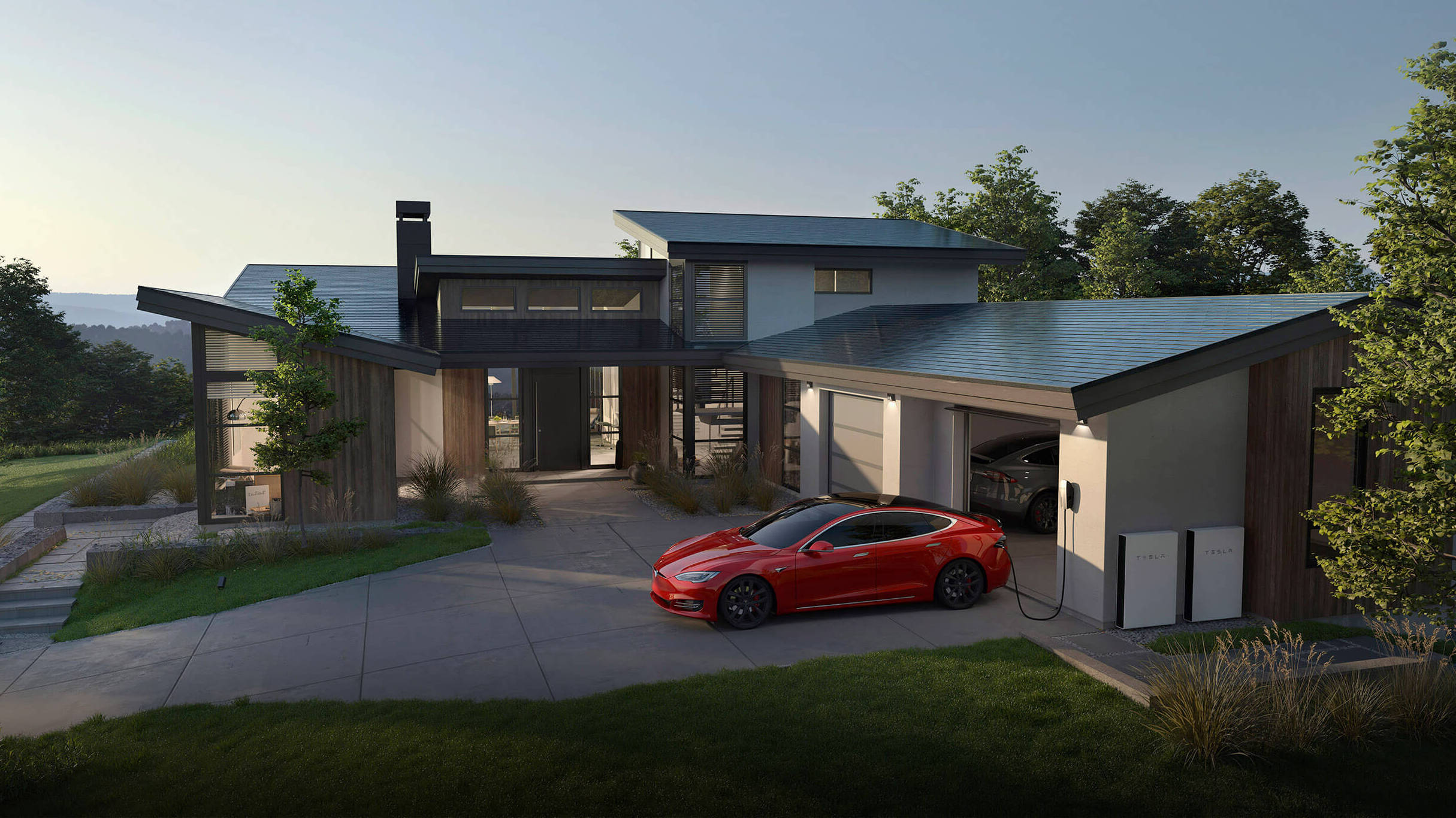Tesla has released new details that outline its policy for the Removal and Reinstallation of its solar panels on its website.
“Removal & Reinstallation (R&R) is the process of temporarily removing solar panels or the entire system from your home and reinstalling them after reroofing, remodeling, or relocation,” Tesla said on its website. Whether a Tesla Solar owner is having their roof reshingled, their entire home remodeled, or is relocating to a new home in another area, the company has specific processes for each of these scenarios.
There are three types of R&R: Roof Work (No Remodel), Home Remodel, and Relocation.
Tesla describes each:
Roof Work (No Remodel): This is the most common type of R&R, for which either part or all of your solar system must be removed before you can repair or reroof your home. With this R&R, your roof line remains the same, and we will reinstall your system where it was originally installed.
Home Remodel: For this type of R&R, we will remove your solar system before you remodel your home and reinstall it once you’re done. When remodeling your home, especially if there are additions or changes to your roof line, there are additional steps and time constraints to consider. Reinstallation may require permits and design changes to your system.
Relocation: For this type of R&R, you are moving and request that we remove your solar system from your current home to reinstall it at your new home.
To get the process going, the owner starts by initiating an R&R Request, Tesla says. Solar owners will submit this request and usually receive a response from Tesla within two days. Then, Tesla sends a Home Improvement Agreement that will then allow the owner to schedule an R&R date. Tesla will then remove the solar panels, and once the roof is replaced, the home is remodeled, or the owner moves into the new house, Tesla will reinstall the panels.
Tesla Solar Panels (Credit: Tesla)
Tesla says there are three types of Home Improvement Agreements: Standard R&R, Custom R&R, and Additional Equipment.
Standard R&R: You have requested that we temporarily remove part or all of your solar energy system so that you can complete typical roof work. Your roof lines are not changing. Please see your energy contract for pricing. Contracts citing “competitive pricing” will be calculated considering the scope of work.
Custom R&R: You have requested that we temporarily remove part or all of your solar energy system so that you can complete work such as changing roof lines, remodeling your home, or moving and relocating the system to your new home. Our Transfer team will review the scope of work to determine if a layout revision is required before the HIA is sent to you to review and sign.
Additional Equipment: You have requested the installation of equipment that was not part of the original solar contract, including pest abatement, snow mitigation clips, rapid shutdown equipment, cellular gateway, and more. Note: This does not apply for requests to increase your system size or production output.
Tesla also outlines that there are specific roof types that vary depending on the state the solar owner lives in. “If you are considering changing your roof type, the new roof type must be eligible for solar panel installation. We currently install on the following roof types per state,” Tesla said.
Credit: Tesla
East Coast states include Connecticut, Washington D.C., Delaware, Florida, Maryland, New Hampshire, New Jersey, New York, Pennsylvania, Rhode Island, South Carolina, and Vermont.
Additionally, there are requirements for roof pitches. Tesla says, “Roof pitch affects solar energy production as related to the solar panels’ orientation to the sun. Optimal solar energy production occurs when sunlight hits the solar panels at a right angle.”
Credit: Tesla
Tesla is coming off of its strongest quarter for Solar in the last two-and-a-half years. The company wrote in its Q1 2021 Shareholder Deck that Solar deployments reached 92 MW in Q1. Solar Roof deployments grew nine times compared to Q1 2020.
What do you think? Let us know in the comments below, or be sure to email me at joey@teslarati.com or on Twitter @KlenderJoey.

Cybertruck
Tesla updates Cybertruck owners about key Powershare feature

Tesla is updating Cybertruck owners on its timeline of a massive feature that has yet to ship: Powershare with Powerwall.
Powershare is a bidirectional charging feature exclusive to Cybertruck, which allows the vehicle’s battery to act as a portable power source for homes, appliances, tools, other EVs, and more. It was announced in late 2023 as part of Tesla’s push into vehicle-to-everything energy sharing, and acting as a giant portable charger is the main advantage, as it can provide backup power during outages.
Cybertruck’s Powershare system supports both vehicle-to-load (V2L) and vehicle-to-home (V2H), making it flexible and well-rounded for a variety of applications.
However, even though the feature was promised with Cybertruck, it has yet to be shipped to vehicles. Tesla communicated with owners through email recently regarding Powershare with Powerwall, which essentially has the pickup act as an extended battery.
Powerwall discharge would be prioritized before tapping into the truck’s larger pack.
However, Tesla is still working on getting the feature out to owners, an email said:
“We’re writing to let you know that the Powershare with Powerwall feature is still in development and is now scheduled for release in mid-2026.
This new release date gives us additional time to design and test this feature, ensuring its ability to communicate and optimize energy sharing between your vehicle and many configurations and generations of Powerwall. We are also using this time to develop additional Powershare features that will help us continue to accelerate the world’s transition to sustainable energy.”
Owners have expressed some real disappointment in Tesla’s continuous delays in releasing the feature, as it was expected to be released by late 2024, but now has been pushed back several times to mid-2026, according to the email.
Foundation Series Cybertruck buyers paid extra, expecting the feature to be rolled out with their vehicle upon pickup.
Cybertruck’s Lead Engineer, Wes Morrill, even commented on the holdup:
As a Cybertruck owner who also has Powerwall, I empathize with the disappointed comments.
To their credit, the team has delivered powershare functionality to Cybertruck customers who otherwise have no backup with development of the powershare gateway. As well as those with solar…
— Wes (@wmorrill3) December 12, 2025
He said that “it turned out to be much harder than anticipated to make powershare work seamlessly with existing Powerwalls through existing wall connectors. Two grid-forming devices need to negotiate who will form and who will follow, depending on the state of charge of each, and they need to do this without a network and through multiple generations of hardware, and test and validate this process through rigorous certifications to ensure grid safety.”
It’s nice to see the transparency, but it is justified for some Cybertruck owners to feel like they’ve been bait-and-switched.
Energy
Tesla starts hiring efforts for Texas Megafactory
Tesla’s Brookshire site is expected to produce 10,000 Megapacks annually, equal to 40 gigawatt hours of energy storage.

Tesla has officially begun hiring for its new $200 million Megafactory in Brookshire, Texas, a manufacturing hub expected to employ 1,500 people by 2028. The facility, which will build Tesla’s grid-scale Megapack batteries, is part of the company’s growing energy storage footprint.
Tesla’s hiring efforts for the Texas Megafactory are hinted at by the job openings currently active on the company’s Careers website.
Tesla’s Texas Megafactory
Tesla’s Brookshire site is expected to produce 10,000 Megapacks annually, equal to 40 gigawatt hours of energy storage, similar to the Lathrop Megafactory in California. Tesla’s Careers website currently lists over 30 job openings for the site, from engineers, welders, and project managers. Each of the openings is listed for Brookshire, Texas.
The company has leased two buildings in Empire West Business Park, with over $194 million in combined property and equipment investment. Tesla’s agreement with Waller County includes a 60% property tax abatement, contingent on meeting employment benchmarks: 375 jobs by 2026, 750 by 2027, and 1,500 by 2028, as noted in a report from the Houston Business Journal. Tesla is required to employ at least 1,500 workers in the facility through the rest of the 10-year abatement period.
Tesla’s clean energy boom
City officials have stated that Tesla’s arrival marks a turning point for the Texas city, as it highlights a shift from logistics to advanced clean energy manufacturing. Ramiro Bautista from Brookshire’s economic development office, highlighted this in a comment to the Journal.
“(Tesla) has great-paying jobs. Not just that, but the advanced manufacturing (and) clean energy is coming to the area,” he said. “So it’s not just your normal logistics manufacturing. This is advanced manufacturing coming to this area, and this brings a different type of job and investment into the local economy.”
Energy
Tesla and Samsung SDI in talks over new US battery storage deal: report
The update was related by industry sources and initially reported by South Korean news outlets.

Recent reports have suggested that Tesla and Samsung SDI are in talks over a potential partnership to supply batteries for large-scale energy storage systems (ESS).
The update was related by industry sources and initially reported by South Korean news outlets.
ESS batteries to be built at Samsung’s Indiana plant
As noted in a report from Korea JoongAng Daily, the demand for energy storage systems has been growing rapidly in North America, thanks in no small part to the surge in AI investments across numerous companies. With this in mind, Tesla has reportedly approached Samsung SDI about a potential battery supply deal.
The deal is reportedly worth over 3 trillion Korean won (approximately $2.11 billion) and will span three years, according to The Korea Global Economic Daily. A battery supply deal with Samsung SDI could make sense for Tesla as the company already has a grid-scale battery, the Megapack, which is perfect for industrial use. Samsung SDI could simply supply cells for the EV maker.
Production of the batteries would reportedly take place at Samsung SDI’s joint venture factory with Stellantis in Indiana, which is currently under construction. Samsung SDI recently announced plans to use part of that plant’s EV lines to produce cells for ESS, with a targeted capacity of 30 GWh by the end of next year.
Tesla and Samsung’s partnership
At present, only a handful of manufacturers, including Korea’s LG Energy Solution, Samsung SDI, SK On, and Japan’s Panasonic, are capable of producing energy storage-scale batteries domestically in the United States. A Samsung SDI official issued a comment about the matter, stating, “Nothing has been finalized regarding cooperation with Tesla.”
The possible energy storage system deal adds another layer to Tesla’s growing collaboration with Samsung, which is already in line as a partner in the upcoming production of Tesla’s AI5 and AI6 chips. Early sample manufacturing of the AI6 is expected to begin in South Korea, with mass production slated for Samsung’s Texas-based Taylor foundry when it starts operations.
The AI6 chip will power Tesla’s next wave of high-volume projects, including the Optimus humanoid robot and the autonomous Cybercab service. Musk has called the partnership with Samsung a “real collaboration,” adding that he personally plans to “walk the line” at the Taylor facility to speed up progress.










